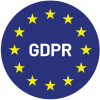The nature of work is evolving rapidly, and so is the workforce.
It’s time to adapt to a transformation unlike any we’ve seen since the dawn of agriculture or the rise of industry. Technologies like automation and AI are furiously reshaping our reality. This time, it’s not just taking place in the fields and factories. It’s happening right in our offices, our homes, our very minds.
As work experience makes up half of an individual’s professional worth, the global workforce stands to be the most disrupted.
While HR has been evolving since digital technology emerged, the pandemic kicked it into high gear. This accelerated the shift to hybrid work models and digital communication, while also pushing companies to implement a digital HR strategy and enhance employee experience (EX).
Imagine a situation where data fuels decision-making and employee satisfaction is sky-high. That’s what a digital HR strategy brings to the table. It’s a roadmap that specifies how your business will use technology to enhance HR processes, automate them, drive informed decision-making, improve EX, and boost workforce efficiency. Not surprisingly, 95% of CHROs advocate the use of digital technologies to elevate HR, according to interviews conducted by McKinsey.
Implementing an effective digital strategy for HR operations is key to workforce success. This article will explore its importance, key components, and a hands-on approach to building a future-ready HR division.
Why is a digital HR strategy important?
Growing companies continually need to expand their teams. The number of total job openings stood at 8 million in the US in August 2024, per the U.S. Bureau of Labor Statistics. That’s about 2.4% of the population.
However, traditional HR systems are not able to keep up with the demands of engaging skilled personnel amidst changing workplace dynamics. Manually performing the sheer amount of HR operations in medium to large enterprises overwhelms HR teams, creates bottlenecks, and hinders their productivity.
Moreover, in the constantly changing business world, trends like remote work, the gig economy, and a rising digital-native workforce require adopting a digital-first approach.
Jeanne Meister, founder of Future Workplace, when asked about the most disruptive HR technology, famously replied, that “artificial intelligence — especially machine learning — is the single most disruptive technology affecting HR. The way we all work is going to change…” And that’s happening right now.
The benefits you gain by incorporating technology to digitally transform HR, aided by AI-driven HR tools, are multifold:
- Increased efficiency: Streamlining HR processes and automating repetitive tasks using digital, AI-based HR tools can free up your HR team to focus on more strategic initiatives like workforce planning and improving employer branding. For instance, imagine a digital recruitment tool (ATS) that enables you to automate hiring processes, such as advertising vacancies across relevant job boards, evaluating applications, shortlisting candidates, scheduling interviews, etc.
- Data-driven decision-making: Partnering with AI-powered HR analytics experts to gather, organize, and analyze employee data allows you to gain valuable insights and make informed decisions about workforce trends, employee churn, feedback, performance appraisals, and upskilling.
- Improved employee experience: Using digital tools (chatbots, self-service, etc.) for onboarding, leave management, and training promotes autonomy and improves EX. Plus, digital platforms facilitate better communication and collaboration among employees, managers, and HR, increasing transparency and employee engagement.
- Competitive advantage: Happy employees are your greatest asset. By enabling higher employee satisfaction, you can attract and retain top talent, giving your business long-term sustainability and a competitive edge.
Key components of a digital HR strategy
The successful implementation of a digital HR strategy relies on the following key elements:
People
Technology alone can’t drive a positive transition; you can’t take the human out of human resources. It requires a cultural and mindset shift in those who implement and use it. That’s why change management is crucial to prepare your HR team to embrace a digital-first attitude. This includes training your team in new workforce management tools and platforms to ensure proficiency and smooth adoption.
Processes
Not all HR processes are created equal. Certain processes require a human touch, such as workforce planning, employer branding, improving work culture, resolving conflicts, and mentoring. That said, you can digitize and automate several other processes, either partially or entirely, related to recruitment, onboarding, employee data, payroll, leaves, feedback, surveys, appraisals, and benefits.
Technology and Tools
Technology is at the heart of a digital HR strategy. Several established and emerging technologies, such as mobile apps, big data analytics, cloud computing, automation, AI/ML, etc. are vying for dominance in the HR tech world, promising to revolutionize workforce management and EX.
Moreover, many tools leverage these technologies to digitize and automate HR functions. These include, but are not limited to:
- Applicant Tracking Systems (ATS)
- Human Resource Information Systems (HRIS)
- Employee Engagement Platforms
- Talent Management Systems
- Performance Management Systems
- Learning Management Systems
Data
In this digital age, data is the new oil. Like oil, you need to extract (from employee surveys, performance reviews, and HR systems), refine, and process data to gain meaningful insights. These insights allow you to drive informed workforce planning and talent management decisions. You can leverage HR data analytics to:
- Identify and address skill gaps
- Improve employee engagement and experience
- Assess employee performance and manage appraisals
- Tailor training programs based on individual preferences
- Visualize trends and generate reports to act quickly
- Predict future hiring needs and employee churn
- Measure the effectiveness of HR programs and initiatives
Dave Ulrich, Father of Modern HR, stated in one of his LinkedIn posts, “The future of HR… is about leveraging technology to guide better decisions and create measurable stakeholder value. We’re moving from accessing information to informing strategic choices that drive real business outcomes.”
Crafting an effective digital HR strategy for your organization
According to BCG research, 75% of digital transformations fail to create lasting value. The same study also mentioned that building a long-term strategy increases the total shareholder value (TSR) by 12.5%. Businesses with visionary, innovative, and risk-taking leaders often achieve enduring success.
Here’s a step-by-step process you can follow to plan and implement a successful HR digital strategy:
Step 1: Assess Your Current HR State
Start with an in-depth evaluation of your existing HR team and processes. Pulse your team’s willingness to embrace the shift and adopt innovation. Evaluate your current HR tech stack, if any, for effectiveness. Identify process bottlenecks and areas where technology can streamline workflows and improve efficiency.
To maximize impact, prioritize the areas for improvement based on alignment with business goals, effort required, urgency, and potential ROI. For instance, if enhancing employee experience is your top priority, focus on digitizing onboarding, performance management, and employee feedback processes.
Step 2: Define Your HR Digital Transformation Goals
Based on the audit findings, define specific, measurable, achievable, relevant, and time-bound (SMART) objectives for the digital HR strategy, ensuring alignment with business goals. This might involve anything from streamlining HR operations to automating processes and decreasing turnover to improving EX.
Establish key success metrics like eNPS (employee Net Promoter Score), eSAT (employee satisfaction), time-to-hire, retention rate, first-year turnover rate, internal mobility rate, etc., to gauge the transformation strategy.
For instance, imagine your employees are struggling with poor experience and low morale. A key objective could be to “increase eSAT and eNPS scores by 20% over the next six months with a digital employee engagement system that encourages continuous feedback and recognition.”
Step 3: Build a Roadmap
Create a comprehensive roadmap to realize your digital HR strategy. The roadmap consists of significant immediate and long-term milestones, responsibilities, resource allocation, and a timeline.
Think of the roadmap as a treasure map that guides you through uncharted territory to uncover hidden treasures – improved employee experience, increased efficiency, data-driven decision-making, and a winning digital HR strategy.
A well-defined roadmap allows you to implement your digital strategy systematically and avoid pitfalls, minimizing disruptions and maximizing positive impact.
Step 4: Choose Appropriate Technology and Tools
Thoroughly research different tools and technologies you can leverage to maximize ROI. Before finalizing, make sure they align with your strategy and desired business outcomes.
Consider ready-to-deploy, cloud-based HR solutions that come with competitive pricing options. They offer cost-effectiveness, worldwide accessibility, speed, scalability, data security, and industry compliance. Plus, they provide access to user-friendly features, updates, and continuous innovation without additional costs or complexities.
Step 5: Implement and Monitor Your Strategy
Initially, focus on your top priorities and gradually move on to less urgent needs in a phased manner. Communicate the roadmap to stakeholders early on to emphasize transformation benefits and manage change gracefully. Start small with a pilot, test it, and adapt your strategy as you move ahead.
Use the predefined metrics to monitor the effectiveness of the implementation of the HR digital transformation strategy. Adjust the strategy based on performance indicators to ensure it remains agile and relevant in a dynamic environment.
Overcoming the challenges of implementing a digital HR strategy
“It’s easier said than done.” This age-old adage applies here too. You’ll encounter the following challenges when implementing a digital strategy for HR operations:
- Resistance to Change: In any digital transformation, one of the biggest challenges is employees’ fear of uncertainty and resistance to innovations. However, you can either build a change management team or hire experts to acquaint them with the transformation strategy beforehand, involve them in planning, and provide sufficient training to facilitate a smooth transition.
- Obtaining Adequate Funding & Resources: A lack of sufficient funds, personnel, and other resources could cripple your digital transformation efforts and prevent you from succeeding. To resolve this, you can adopt a phased approach, prioritize high-impact areas, optimize resource allocation, and even outsource ancillary functions.
- Data Privacy & Security: Data breaches and violations are a real threat with serious repercussions. They can lead to legal issues, financial penalties, and a loss of employee trust, undermining your digital HR initiatives. The solution is to implement robust security measures, ensure regulatory compliance, and educate your HR team about following data protection best practices.
The future of HR is now
The HR world is changing for the better and fast. Several emerging trends, such as AI-driven HR operations, employee experience platforms, a mobile-first attitude, and data analytics with predictive modeling, are slowly but surely taking root.
If you don’t have a robust HR digital transformation strategy, you’ll lose the talent recruitment and retention war to your competitors.
It’s time to take action or get left behind. Embrace the future of HR and build a winning strategy today. Learn how Sogolytics can help!














